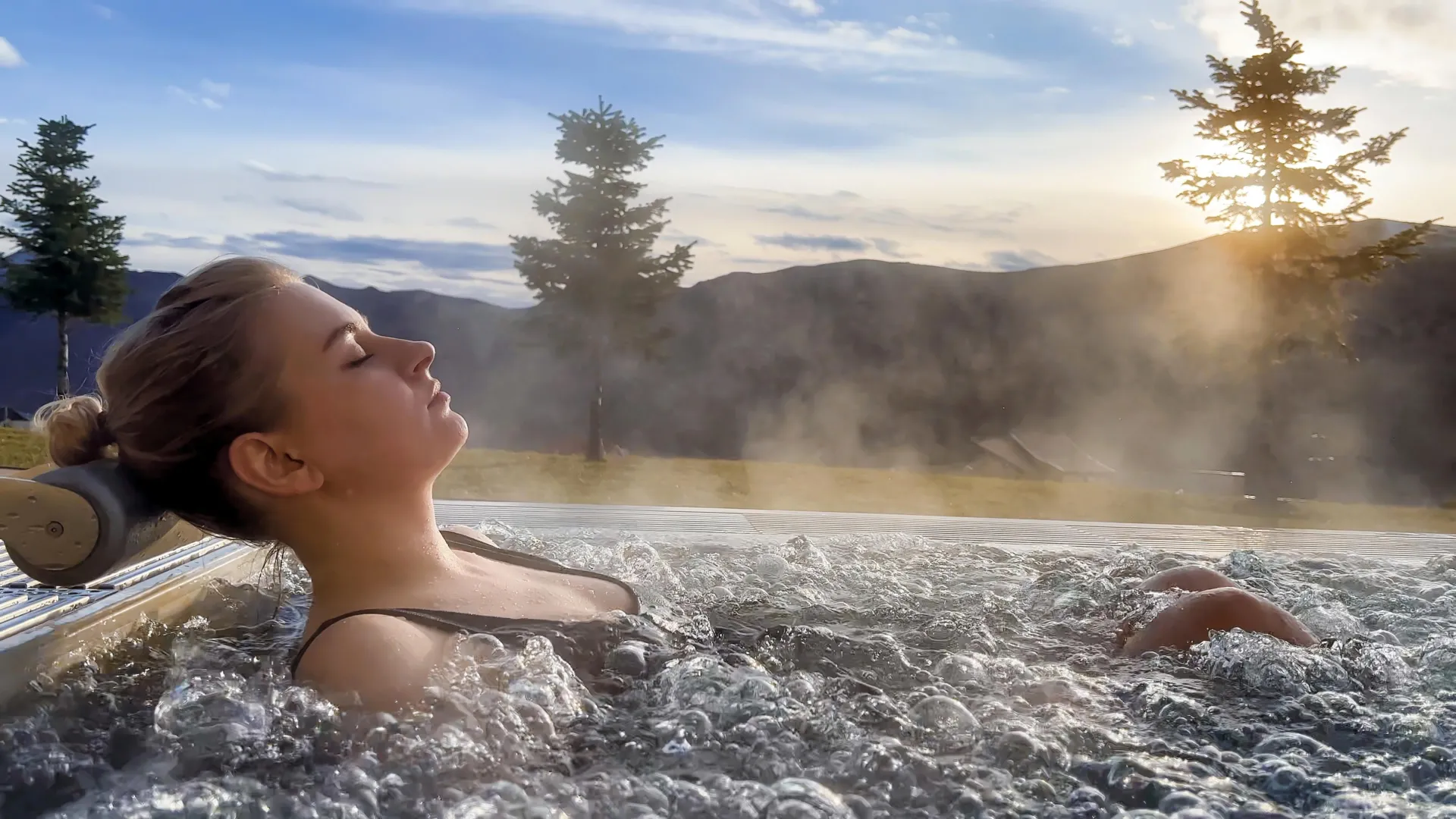New research shows hot tubs trigger surprising health benefits saunas don’t
Hot tubs deliver deeper physiological benefits than saunas by driving stronger whole-body heat responses.
- Date:
- November 21, 2025
- Source:
- University of Oregon
- Summary:
- Researchers found that hot tubs raise core body temperature more effectively than traditional or infrared saunas, leading to stronger boosts in blood flow and immune activity. Only hot-water immersion produced measurable changes in inflammatory markers. These effects can persist beyond the session, suggesting a sustained health benefit. For anyone unable or unwilling to exercise, heat therapy may offer a surprisingly effective option.
- Share:

Hot tubs and saunas are both known for helping tired muscles relax and providing comforting warmth. However, recent research indicates that hot tubs may deliver more noticeable health benefits.
A team at the Bowerman Sports Science Center at the University of Oregon examined how the body responds to three types of passive heating. Their study compared time spent soaking in a hot tub with sitting in a traditional dry sauna or a modern far-infrared sauna.
How Hot Water Affects the Body
Raising core body temperature through hot-water immersion can support several important physiological processes. According to the researchers, this type of heating can help lower blood pressure, activate parts of the immune system and gradually improve how the body handles heat stress. Many of these effects continue even after the heating session ends.
"We compared the most commonly utilized modalities of passive heating as they're used in everyday life and studied in scientific research," said study lead author Jessica Atencio, a doctoral student in the lab of Christopher Minson. "No studies have compared the acute responses between the three."
The findings were recently published in the American Journal of Physiology.
What the Researchers Measured
Under Minson's guidance, who is the Kenneth M. and Kenda H. Singer Endowed Professor of Human Physiology and director of the Bowerman Center, the team tracked several key indicators. These included body temperature, blood pressure, heart rate, cardiac output (the amount of blood the heart pumps per minute), immune cell levels and inflammation-related biomarkers. Measurements were taken before, during and after each type of heat exposure.
The study involved 10 men and 10 women between 20 and 28 years old who exercised regularly. This allowed the researchers to focus specifically on how each heat method affects a young, healthy population.
Hot Water Immersion Stands Out
"We saw that hot water immersion was the most impactful in increasing core body temperature, which is the main stimulus for these subsequent responses," Atencio said. "Increasing body temperature causes an increase in blood flow, and just the force of blood moving across your vessels is beneficial for your vascular health."
When blood samples were analyzed, hot-water immersion was the only method that produced an inflammatory response as shown by increases in inflammatory cytokines and specific immune cell populations.
Atencio noted that these findings were expected.
"Hot water immersion gives you the most robust changes in core temperature because you can't effectively dissipate heat as you can if you have contact with the air and you're sweating to cool the body," she said. "When you're submerged in water, the sweat mechanisms aren't efficient."
Long-Term Interest in Heat Therapy
Minson has spent more than twenty years studying the effects of heat exposure and how it relates to factors such as age, fitness level and illness.
"There's no doubt in my mind that if people are willing to do some heat therapy, it's going to align with improved health, as long as it's done in moderation," Minson said. "If you repeat these stresses over time, our lab and many others have shown that they are consistent with improved health."
He noted that exercise can offer similar or even greater advantages, but for people who cannot or prefer not to exercise, heat therapy may serve as an appealing alternative.
"It can be a very peaceful, sometimes religious, sometimes cultural and sometimes social experience," Minson said. "And I think those aspects contribute to the health benefits and are critically important."
Using Heat Therapy Safely
"We want people to be smart and safe about it," he added. "We need to make sure that they are cleared by their physicians or others for heat therapy or for exercise, whether it's mild to moderate walking or jogging or strength training. Then they'll be fine to do heat therapy."
As a runner, Atencio is familiar with people who mix heat therapy with physical activity.
"We always say that exercise is the primary nonpharmacological treatment that people should be doing to promote health, but some people can't or just won't exercise," she said. "Heat therapy is good supplementation."
Story Source:
Materials provided by University of Oregon. Note: Content may be edited for style and length.
Journal Reference:
- Jessica K. Atencio, Emma L. Reed, Karen Wiedenfeld Needham, Kathryn M. Lucernoni, Lindan N. Comrada, John R. Halliwill, Christopher T. Minson. Comparison of thermoregulatory, cardiovascular, and immune responses to different passive heat therapy modalities. American Journal of Physiology-Regulatory, Integrative and Comparative Physiology, 2025; 329 (1): R20 DOI: 10.1152/ajpregu.00012.2025
Cite This Page: